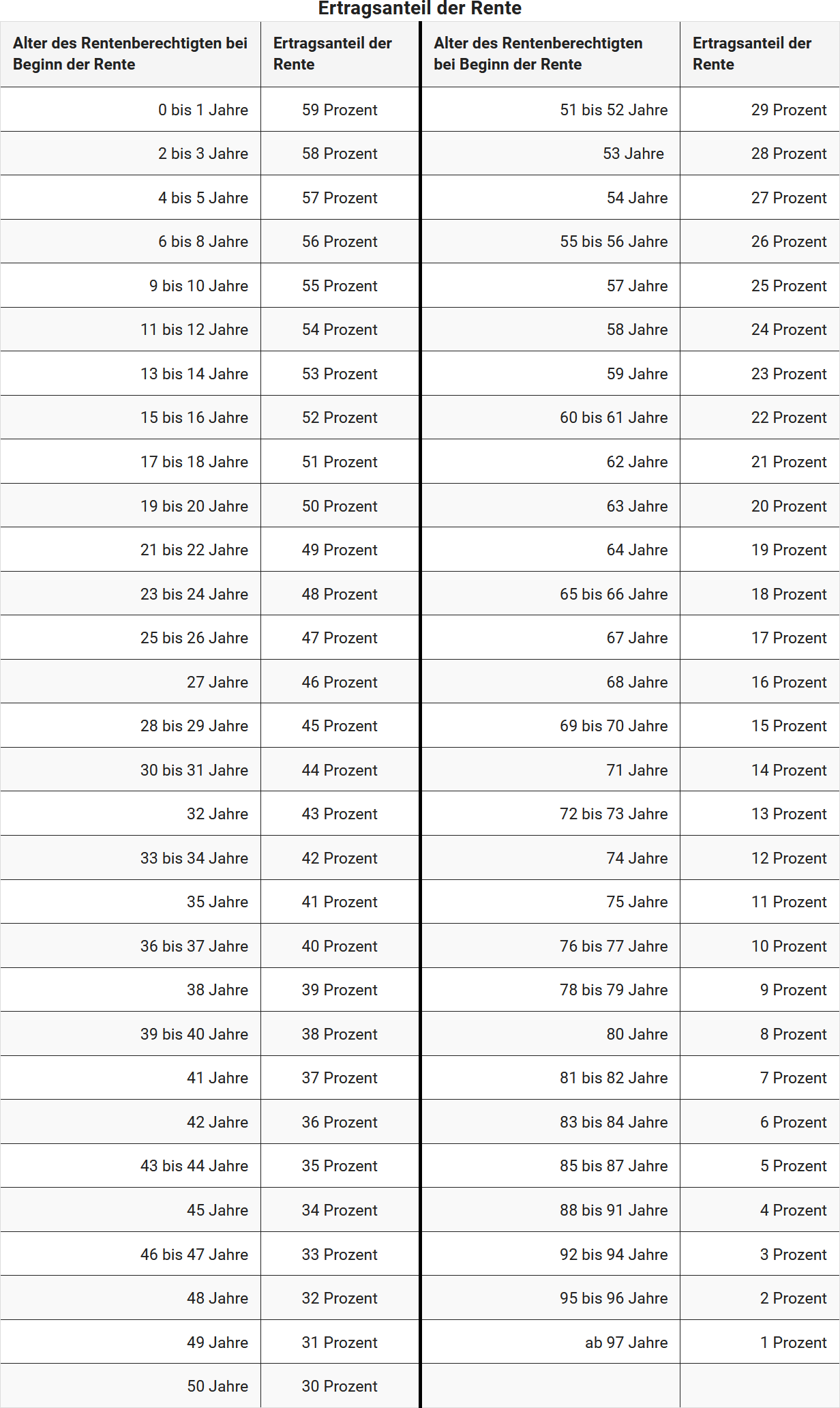When can pension payments or long-term financial burdens be deducted as special expenses?
For asset transfers as part of anticipated inheritance, pension payments can be deducted as special expenses by the asset transferee and payer of the payments, and must be taxed as "other income" by the asset transferor and recipient of the payments under section 22 of the Income Tax Act.
For contracts concluded up to and including 2007, pension payments can be considered either as "perpetual burdens" or as "annuities" within the framework of special expenses:
- Annuities are fixed payments. For life annuities, the income portion is deductible as special expenses. Accordingly, the transferor only has to tax this amount as "other income".
- In the case of a perpetual burden, the transferee can deduct the entire amount as special expenses, and the transferee must tax the entire amount as "other income". Unlike an annuity, these are not fixed payments but variable payments that can be adjusted in the event of increased needs of the transferor or reduced capacity of the transferee, for example, an obligation to cover the costs of nursing home care (provision "in sickness and in health").
For agreements from 2008 onwards, the distinction between perpetual burdens and annuities has been abolished. Pension payments are now always considered "perpetual burdens". This means that the previously required calculation of the income portion for life annuities is no longer necessary. This means:
- The transferee may deduct the pension payments in full as special expenses (section 10 (1a) no. 2 of the Income Tax Act).
- The transferor must tax the pension payments in full as "other income" (section 22 no. 1a of the Income Tax Act).
A house was transferred to you in 2006. At the time of the transfer, the previous owner was 65 years old. In addition to a one-off payment of 150.000 Euro for the transfer, you also agreed on an annual annuity of 15.000 Euro. The performance and consideration were not determined on an economic basis.
The amount you can claim as special expenses depends on the age of the transferor at the time of the sale. According to section 22 no. 1 sentence 3 of the Income Tax Act, the share is 18 per cent of 15.000 Euro = 2.700 Euro.
Please note: Pure maintenance payments are not special expenses. You cannot deduct them in this sense. The same applies to annuity payments made voluntarily. In this case, a deduction as an extraordinary burden may be considered.
Note: The deduction of pension payments as special expenses is only possible for contracts concluded after 31 December 2007 in the case of the transfer of businesses, partnership shares in partnerships and shares in companies (at least 50 per cent). In addition, they must be "income-generating units". The transfer of real estate or securities is not eligible. However, the restriction to the transfer of businesses etc. does not apply to contracts concluded before 2008.
(2024): When can pension payments or long-term financial burdens be deducted as special expenses?
Up to what amount can I deduct pensions and permanent burdens?
The deductibility of pensions or recurring burdens depends on the date of the respective contract. With the Annual Tax Act 2008, the distinction between pensions and recurring burdens was abolished (§ 10 para. 1a no. 2 EStG).
If your contract for the payment of a pension was concluded before 2008, your payments are only deductible up to the amount of the pension's yield share. The recipient of the pension must also tax this amount. If you concluded the contract later, you can deduct the pension payment in full as special expenses. The same applies here: The recipient of the pension must declare the payment as "other income" in their tax return. The same applies to the payment of a recurring burden.
You purchased a house in 2006. At the time of sale, the seller was 65 years old. In addition to a one-off payment of 150,000 Euro, you also agreed on an annual pension of 15,000 Euro.
The amount you can claim as special expenses depends on the seller's age at the time of sale.
The so-called yield share is 18 percent of 15,000 Euro = 2,700 Euro.
Note: The deduction of pension payments as special expenses is only possible in the case of the transfer of businesses, partnership shares in partnerships, and shares in corporations (at least 50 percent). They must be "income-generating units". The transfer of real estate or securities is not eligible. However, the restriction to the transfer of businesses etc. does not apply to contracts concluded before 2008.
(2024): Up to what amount can I deduct pensions and permanent burdens?
What is the income share of the pension?
The percentage of income depends on the age of the pension beneficiary at the start of the pension (§ 22 No. 1 Sentence 3 EStG). The following table shows the percentage of income based on the age at the start of the pension:

(2024): What is the income share of the pension?





